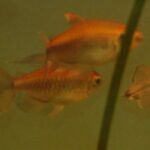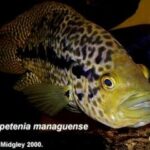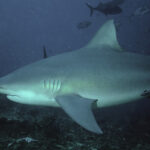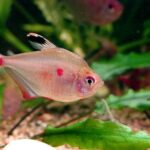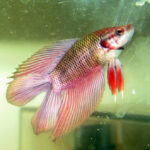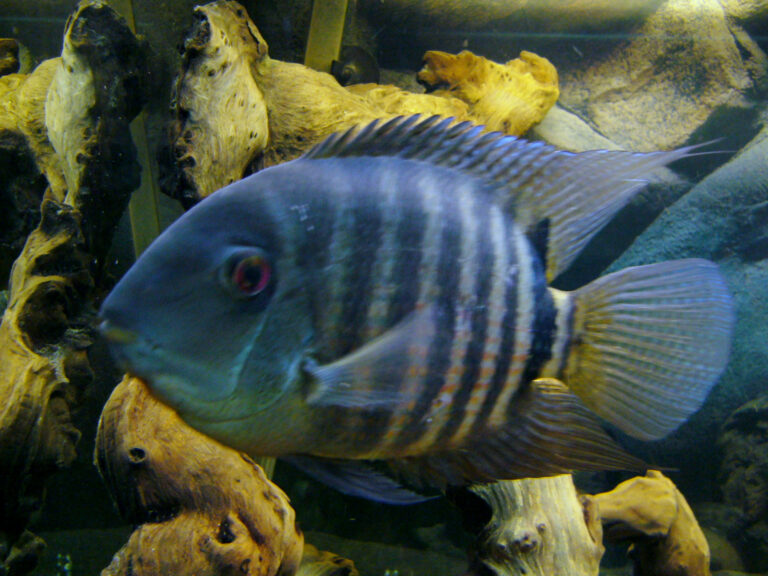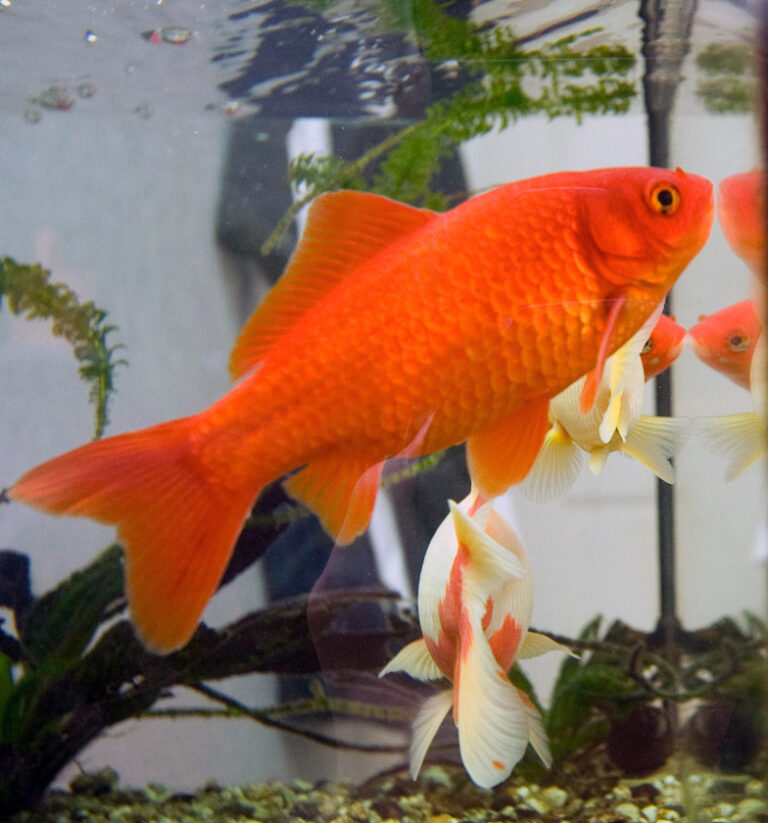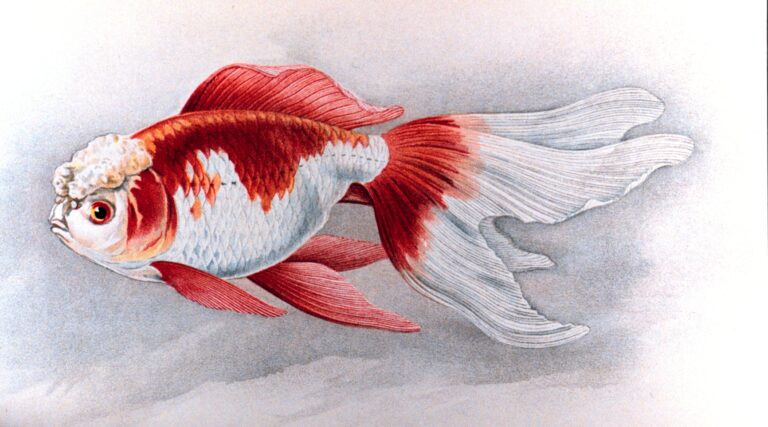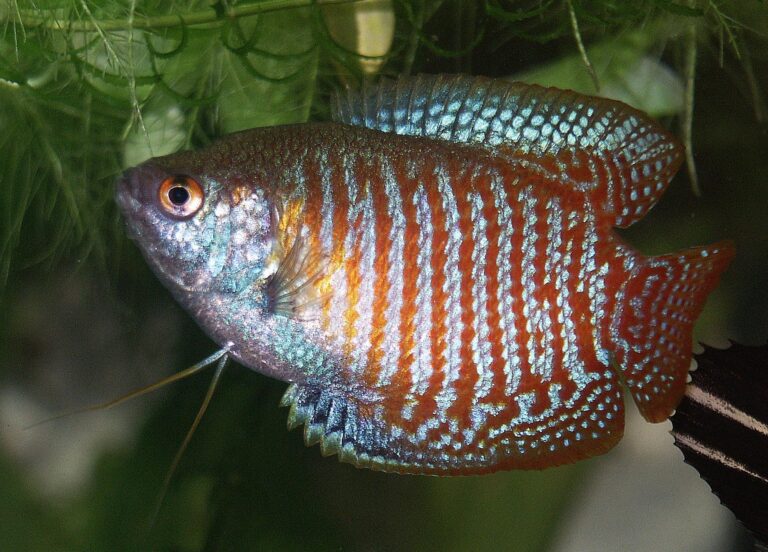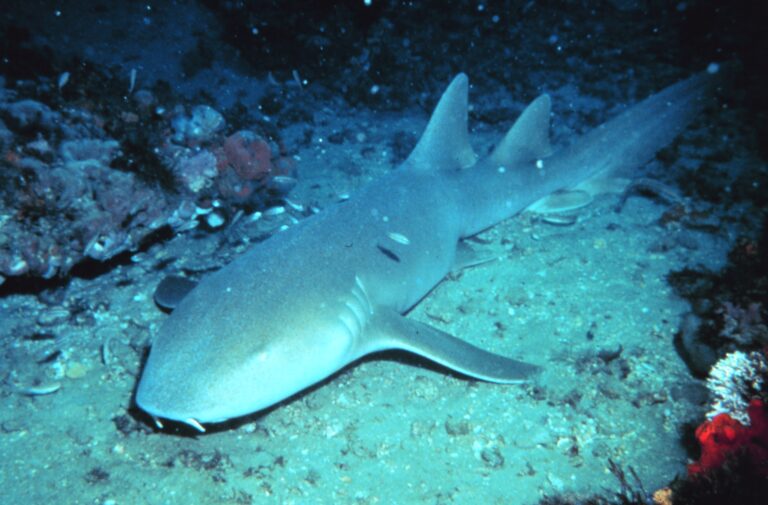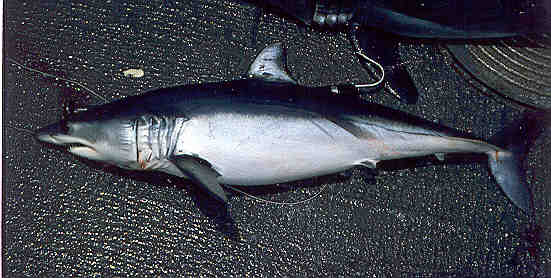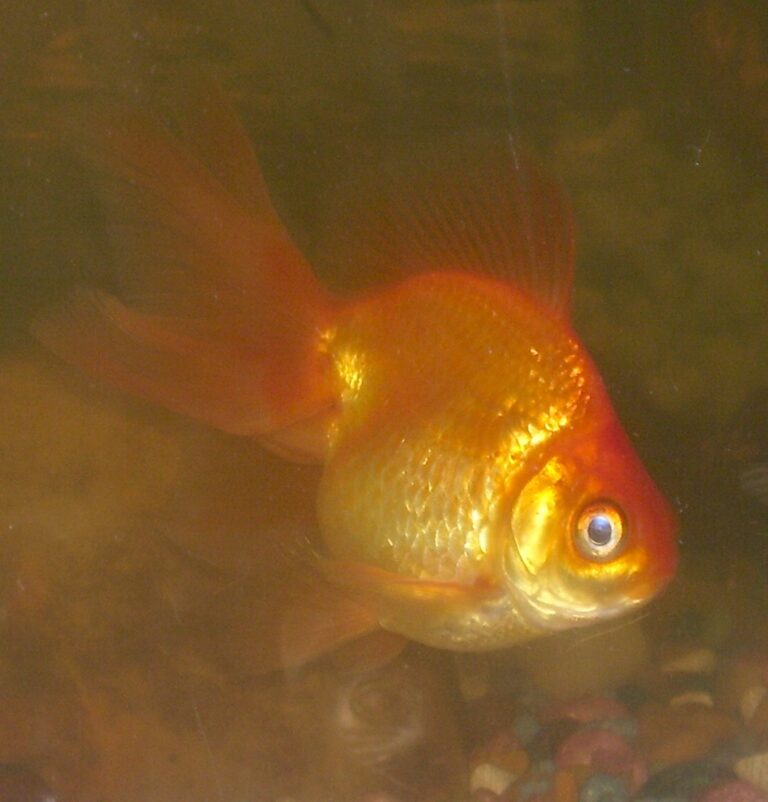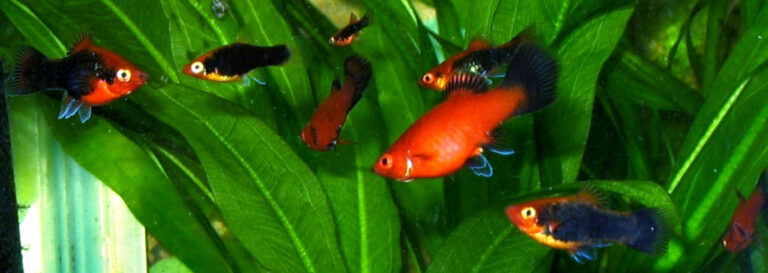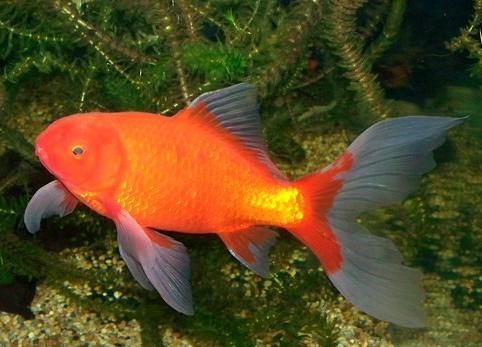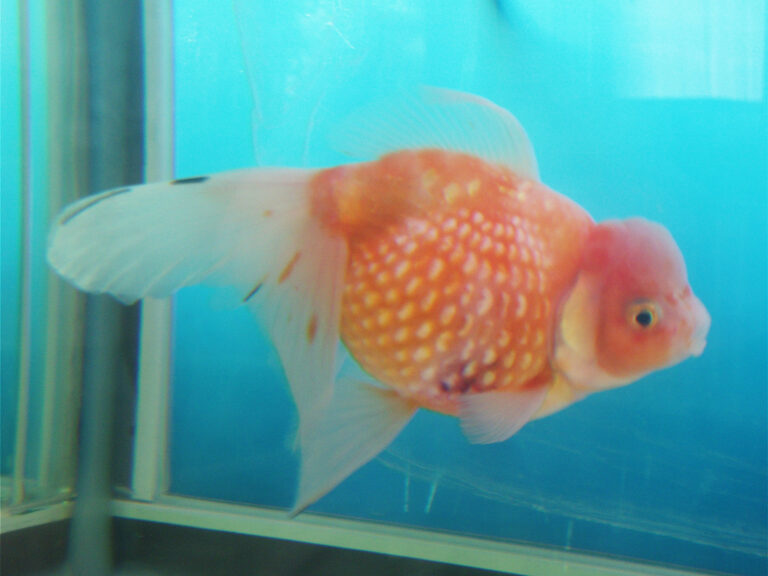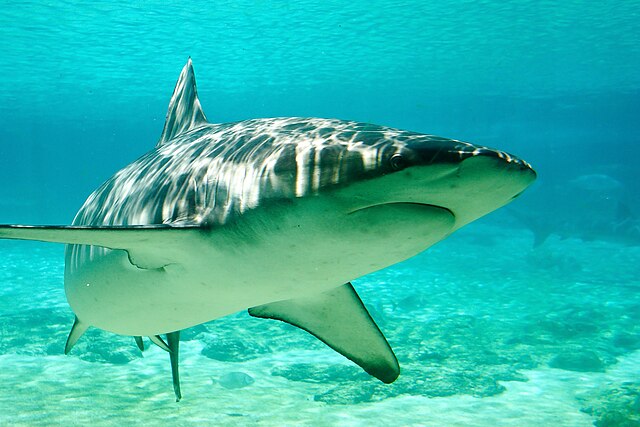Gold Dust Molly
By Ryan Maron | Last Modified: June 12, 2025
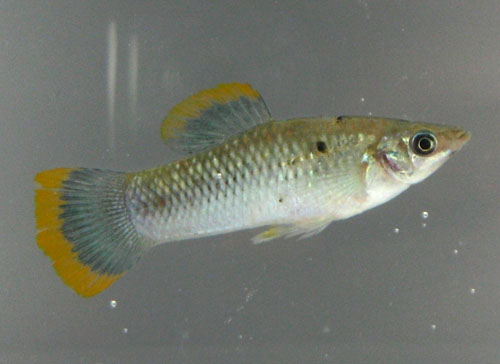
The Gold Dust Molly (*Poecilia sphenops*) represents one of the most popular and visually striking freshwater aquarium fish available to enthusiasts worldwide. This vibrant livebearing species displays distinctive golden speckles across its body, creating an appearance reminiscent of shimmering gold dust scattered against a darker background. Originally native to Central America and parts of South America, Gold Dust Mollies have become essential components of community aquariums due to their peaceful temperament, hardy nature, and remarkable adaptability to various water conditions.
These tropical fish play a significant ecological role as both omnivorous feeders and prolific breeders within freshwater ecosystems. In their natural habitats, Gold Dust Mollies contribute to algae control and serve as important prey species for larger predatory fish. Their ability to thrive in brackish conditions makes them particularly valuable for maintaining biological balance in coastal freshwater systems where salinity levels fluctuate. The commercial aquarium trade has embraced this species for decades, making Gold Dust Mollies instrumental in introducing countless hobbyists to the rewarding world of tropical fish keeping.
| Feature | Details |
| Common Name | Gold Dust Molly |
| Scientific Name | Poecilia sphenops |
| Family | Poeciliidae |
| Typical Size | 7-12 cm (3-5 inches), 15-30 grams |
| Habitat | Shallow freshwater and brackish streams |
| Diet | Omnivorous – algae, plants, small invertebrates |
| Distribution | Central America to northern South America |
| Conservation Status | Least Concern |
Taxonomy & Classification
The Gold Dust Molly belongs to the family Poeciliidae, a diverse group of freshwater fish commonly known as livebearers. Within this family, the genus *Poecilia* encompasses numerous molly species that share similar reproductive characteristics and ecological preferences. The scientific classification places *Poecilia sphenops* as the foundational species from which many ornamental molly varieties, including the Gold Dust Molly, have been selectively bred.
Taxonomic studies reveal that *Poecilia sphenops* exhibits considerable genetic diversity across its natural range, leading to multiple recognized subspecies and regional variants. The Gold Dust Molly specifically represents a captive-bred color morph rather than a distinct wild subspecies. Molecular phylogenetic analysis indicates that the Poeciliidae family diverged approximately 26 million years ago, with the *Poecilia* genus establishing itself throughout Central American watersheds during subsequent geological periods.
The classification hierarchy positions Gold Dust Mollies within the order Cyprinodontiformes, which includes killifish and other small freshwater species adapted to variable environmental conditions. Recent genetic research has refined our understanding of molly relationships, revealing that *P. sphenops* serves as a parent species for several hybrid lineages commonly found in the aquarium trade. This taxonomic complexity underscores the importance of proper identification when studying wild populations versus captive-bred ornamental varieties.
Physical Description
Gold Dust Mollies exhibit striking physical characteristics that distinguish them from other molly varieties and freshwater aquarium species. The most prominent feature consists of metallic golden or bronze speckles distributed across the entire body surface, creating the distinctive “gold dust” appearance that gives this fish its common name. These reflective scales catch and scatter light, producing an iridescent shimmer that intensifies under proper aquarium lighting conditions.
Adult Gold Dust Mollies typically reach lengths of 7-12 centimeters, with females generally growing larger than males. The body shape follows the classic molly profile with a laterally compressed form, slightly arched dorsal line, and streamlined proportions suitable for active swimming. Sexual dimorphism becomes apparent in mature specimens, as males develop more pronounced dorsal fins and possess the characteristic gonopodium used for reproduction.
The base coloration beneath the golden speckles varies from dark gray to black, providing striking contrast that enhances the metallic highlights. Fin structure includes a fan-shaped caudal fin, elongated dorsal fin in males, and well-developed pectoral fins that aid in precise maneuvering. Body proportions remain consistent with wild-type mollies, maintaining the robust build and efficient swimming characteristics that have ensured survival success across diverse aquatic environments.
Scale patterns follow standard teleost fish arrangements, with the golden pigmentation concentrated in specialized chromatophores that reflect light wavelengths in the yellow-orange spectrum. This genetic trait results from selective breeding programs that have enhanced naturally occurring metallic qualities found in some wild *Poecilia sphenops* populations.
Habitat & Distribution
The natural distribution of *Poecilia sphenops*, the ancestral species of Gold Dust Mollies, extends throughout Central America from Mexico southward to Colombia and Venezuela. Wild populations inhabit diverse freshwater environments including slow-moving rivers, coastal streams, cenotes, and shallow lake margins where water temperatures remain consistently warm year-round. These fish demonstrate remarkable tolerance for varying salinity levels, frequently occurring in brackish zones where freshwater systems meet tidal influences.
Preferred habitat characteristics include areas with abundant vegetation, moderate water flow, and depths ranging from 0.5 to 3 meters. Wild mollies often congregate near submerged logs, rock formations, and dense plant growth that provide shelter from predators and optimal foraging opportunities. Water chemistry in natural habitats typically shows pH values between 7.0-8.5 with moderate hardness levels that reflect the limestone geology common throughout their range.
Temperature preferences align with tropical climate patterns, with optimal ranges between 22-28°C (72-82°F) throughout most of their distribution. Seasonal variations in rainfall create fluctuating water levels and salinity concentrations, conditions that have shaped the remarkable adaptability observed in captive Gold Dust Molly populations. Wild mollies frequently utilize shallow, sunlit areas where algae growth provides abundant food resources and elevated temperatures support rapid development and reproduction.
The species’ ability to colonize diverse aquatic environments has contributed to its success in areas where humans have introduced populations beyond their natural range. This adaptability makes Gold Dust Mollies excellent candidates for aquarium keeping, as they readily adjust to artificial environments that replicate their preferred natural conditions.
Diet & Feeding Behavior
Gold Dust Mollies exhibit omnivorous feeding behavior that reflects the dietary flexibility essential for survival across varied aquatic environments. In natural settings, these fish spend considerable time grazing on algae films that coat submerged surfaces, using their small mouths and specialized teeth to scrape microscopic plant matter from rocks, wood, and vegetation. This herbivorous component comprises approximately 60-70% of their natural diet, making them valuable biological algae controllers in both wild ecosystems and aquarium settings.
The remaining dietary portion consists of small invertebrates including mosquito larvae, water fleas, copepods, and other zooplankton species that provide essential proteins and fats necessary for growth and reproduction. Feeding behavior patterns show distinct diurnal preferences, with peak activity occurring during morning and late afternoon hours when light conditions optimize both algae photosynthesis and invertebrate movement patterns.
Captive Gold Dust Mollies readily accept commercial aquarium foods including high-quality flakes, pellets, and specialized vegetarian formulations designed for livebearing species. Supplemental feeding with blanched vegetables such as spinach, lettuce, and peas helps maintain proper digestive health and supports the vibrant coloration that makes these fish so attractive to aquarium enthusiasts. Live or frozen foods including brine shrimp, bloodworms, and daphnia provide nutritional variety that promotes optimal health and breeding condition.
Feeding frequency recommendations suggest small portions offered 2-3 times daily rather than single large feedings, mimicking the continuous grazing patterns observed in wild populations. This approach prevents overfeeding complications while ensuring adequate nutrition for active fish that maintain high metabolic rates in warm water environments.
Behavior & Adaptations
Gold Dust Mollies display complex social behaviors that reflect their evolutionary adaptation to group living and predator avoidance strategies. These fish naturally form loose aggregations called schools, particularly when feeding or seeking shelter, though they lack the highly coordinated swimming patterns seen in true schooling species. Social hierarchies develop within established groups, with dominant individuals claiming preferred feeding territories and choice spawning locations.
Territorial behavior becomes most pronounced during breeding periods when males establish small territories and actively court females through elaborate display rituals. These courtship behaviors include fin spreading, color intensification, and persistent following patterns that demonstrate male fitness and genetic quality. Outside of reproductive contexts, Gold Dust Mollies generally exhibit peaceful temperaments that make them excellent community aquarium residents.
Swimming behavior patterns show strong preferences for middle and upper water column areas where food availability remains highest and predation pressure decreases. Natural predator avoidance strategies include rapid burst swimming capabilities, utilization of vegetation cover, and behavioral modifications based on environmental cues such as sudden movements or shadows. These adaptations translate well to aquarium environments where similar behavioral patterns help reduce stress and promote natural activities.
Temperature-related behavioral adaptations allow Gold Dust Mollies to adjust activity levels based on water temperature fluctuations. Higher temperatures stimulate increased swimming activity, feeding frequency, and metabolic processes, while cooler conditions trigger reduced movement patterns and energy conservation behaviors. This physiological flexibility contributes significantly to their reputation as hardy aquarium species capable of tolerating minor environmental variations that might stress more sensitive fish species.
Reproduction & Life Cycle
Gold Dust Mollies employ a livebearing reproductive strategy that distinguishes them from egg-laying fish species and contributes to their success in both natural and captive environments. Females reach sexual maturity at approximately 3-4 months of age, while males typically mature slightly earlier at 2-3 months, corresponding with their smaller adult size and faster development rates.
The reproductive process begins with internal fertilization accomplished through the male’s modified anal fin structure called a gonopodium. This specialized organ transfers sperm packets directly into the female’s reproductive tract, where fertilization occurs and embryonic development proceeds entirely within the mother’s body. Gestation periods typically last 28-35 days depending on water temperature, with warmer conditions accelerating development and cooler temperatures extending the pregnancy duration.
Female Gold Dust Mollies can produce broods ranging from 10-40 fry depending on their size, age, and nutritional condition. Remarkably, females possess the ability to store sperm from multiple matings, allowing them to produce several consecutive broods from a single fertilization event. This reproductive adaptation provides significant survival advantages in environments where mate availability may be unpredictable or limited.
Newborn fry measure approximately 6-8 millimeters at birth and demonstrate immediate swimming capabilities and feeding behaviors. Unlike many fish species, molly fry do not require parental care and can survive independently if adequate food sources and shelter are available. Growth rates progress rapidly under optimal conditions, with juveniles reaching half their adult size within 8-10 weeks and achieving reproductive maturity by 3-4 months of age.
The species’ prolific breeding capabilities have made Gold Dust Mollies popular choices for aquarium breeding programs and commercial aquaculture operations. However, this same reproductive success can lead to overpopulation issues in closed systems without proper population management strategies.
Predators & Threats
In their natural habitats, Gold Dust Mollies face predation pressure from various aquatic and semi-aquatic species that have shaped their evolutionary development and behavioral adaptations. Primary predators include larger freshwater fish such as cichlids, catfish, and pike species that inhabit the same Central American watersheds. Juvenile mollies face additional threats from smaller predatory fish, aquatic insects, and amphibian larvae that can consume newly born fry and young juveniles.
Avian predators represent another significant threat category, particularly wading birds like herons, egrets, and kingfishers that hunt in shallow water areas where mollies commonly feed and reproduce. These aerial threats have influenced the species’ tendency to seek vegetation cover and exhibit rapid escape responses to overhead shadows or sudden movements. Terrestrial predators including snakes, frogs, and small mammals occasionally capture mollies in very shallow water or during seasonal flooding events.
Environmental threats in natural habitats include habitat destruction through deforestation, agricultural runoff, and urban development that degrades water quality and eliminates critical spawning areas. Pollution from pesticides and industrial chemicals poses ongoing challenges for wild molly populations, particularly in regions experiencing rapid economic development and insufficient environmental protection measures.
Climate change impacts manifest through altered precipitation patterns, temperature fluctuations, and sea level changes that affect the brackish water zones where many molly populations thrive. These environmental stressors can disrupt breeding cycles, food availability, and survival rates across different life stages. Invasive species introductions in some regions create additional competitive pressures and predation threats that native molly populations must navigate for continued survival.
Captive Gold Dust Mollies face different threat profiles focused primarily on water quality issues, disease outbreaks, and inappropriate tank mate selections that can result in stress, injury, or mortality in aquarium environments.
Conservation Status
The International Union for Conservation of Nature (IUCN) currently classifies *Poecilia sphenops* as a species of Least Concern, reflecting the widespread distribution and stable population trends observed across most of its natural range. This designation indicates that Gold Dust Mollies and their wild counterparts do not face immediate extinction threats at the species level, though regional population variations may experience localized pressures.
Population assessments conducted throughout Central America suggest that most wild molly populations remain robust and continue to occupy their historical ranges without significant declines. The species’ remarkable adaptability to environmental variations, combined with high reproductive rates and broad habitat tolerance, provides substantial resilience against moderate ecological disruptions. However, monitoring programs emphasize the importance of continued habitat protection to maintain long-term population stability.
Regional conservation concerns focus primarily on specific watersheds experiencing intensive human development pressure, particularly in coastal areas where brackish water habitats face threats from urban expansion and tourism development. Water quality degradation in some river systems has prompted local conservation initiatives aimed at protecting critical spawning and nursery areas essential for population recruitment.
The extensive captive breeding programs supporting the aquarium trade have created additional population security through maintained genetic diversity in controlled environments. These captive populations could potentially serve as source material for future reintroduction efforts if wild populations experience severe declines, though such measures are not currently anticipated based on existing population assessments.
Conservation efforts increasingly emphasize ecosystem-level protection strategies that benefit multiple species sharing molly habitats, including comprehensive watershed management, pollution control measures, and sustainable development practices that balance human needs with environmental protection requirements.
Human Interaction
Gold Dust Mollies have established significant relationships with human activities spanning multiple contexts from recreational aquarium keeping to scientific research applications. The global aquarium trade represents the primary human interaction with this species, generating millions of captive-bred specimens annually for distribution to pet stores, online retailers, and aquaculture facilities worldwide. This commercial relationship has created economic value while promoting public interest in freshwater ecology and responsible pet ownership.
Educational institutions frequently utilize Gold Dust Mollies in biology courses and research programs due to their hardy nature, observable behaviors, and straightforward breeding requirements. These fish serve as excellent subjects for studying livebearing reproduction, social behavior patterns, and environmental adaptation strategies. Student research projects often focus on molly behavior, feeding preferences, and response to environmental variables, providing hands-on learning opportunities that enhance scientific understanding.
In regions where molly fish varieties occur naturally, local communities sometimes incorporate these species into traditional fishing practices, though they typically represent minor components of subsistence fishing activities. The small size and abundance of mollies make them more valuable as bait fish for capturing larger species rather than direct food sources for human consumption.
Aquaculture applications extend beyond ornamental purposes to include mosquito control programs where mollies consume larval mosquitoes in agricultural water systems and constructed wetlands. This biological control method provides environmentally friendly alternatives to chemical pesticide applications while supporting integrated pest management strategies in tropical and subtropical regions.
The species’ popularity among beginning aquarium hobbyists has generated extensive online communities, care guides, and breeding forums that share information about optimal husbandry practices, genetic selection, and variety development. These community interactions promote responsible fishkeeping while advancing collective knowledge about molly biology and behavior.
Interesting Facts
Gold Dust Mollies possess remarkable physiological adaptations that allow them to survive in both freshwater and saltwater environments, making them one of the few tropical aquarium species capable of gradual acclimation to marine conditions. This salinity tolerance stems from specialized osmoregulatory mechanisms that enable efficient ion exchange and water balance maintenance across varying environmental conditions. Some aquarium enthusiasts successfully maintain mollies in brackish or full saltwater systems, though such transitions require careful gradual acclimation procedures.
The golden speckled appearance that characterizes Gold Dust Mollies results from a complex interaction between multiple genes controlling chromatophore development and metallic pigment distribution. Breeding programs have isolated and enhanced these genetic traits through selective breeding techniques that concentrate desirable color characteristics while maintaining overall fish health and reproductive capabilities. The intensity of golden coloration can vary significantly based on diet, water quality, stress levels, and genetic background.
Female Gold Dust Mollies demonstrate a fascinating reproductive phenomenon called superfetation, where they can carry multiple broods at different developmental stages simultaneously. This adaptation allows continuous fry production without requiring recovery periods between pregnancies, contributing to the species’ remarkable reproductive success. A single female can potentially produce over 100 offspring within a four-month period under optimal conditions.
Historical records indicate that mollies were among the first tropical freshwater fish successfully maintained in home aquariums during the early 20th century, helping to establish the foundation for modern aquarium keeping practices. Their hardiness and breeding success made them valuable species for developing transportation methods, water treatment techniques, and nutrition formulations that benefited the entire ornamental fish industry.
The species exhibits unusual behavioral flexibility regarding shoaling patterns, forming loose aggregations during feeding activities while displaying more territorial behaviors during breeding periods. This social adaptability allows Gold Dust Mollies to thrive in various aquarium configurations from community tanks to species-specific breeding setups.
Frequently Asked Questions
How long do Gold Dust Mollies typically live in aquarium conditions?
Gold Dust Mollies generally live 3-5 years in well-maintained aquarium environments, with some exceptional specimens reaching 6-7 years under optimal care conditions. Lifespan factors include water quality consistency, appropriate nutrition, adequate space, and absence of chronic stress from aggressive tank mates or environmental fluctuations. Regular water changes, proper filtration, and stable temperature maintenance significantly contribute to longevity in captive populations.
Can Gold Dust Mollies be kept with other community fish species?
Gold Dust Mollies are excellent community aquarium residents that coexist peacefully with most non-aggressive freshwater species of similar size requirements. Compatible tank mates include platy fish varieties, tetras, peaceful barbs, and small catfish species. However, they should not be housed with fin-nipping species or highly aggressive territorial fish that might stress or injure the mollies.
What water parameters do Gold Dust Mollies require for optimal health?
Gold Dust Mollies thrive in water temperatures between 72-82°F (22-28°C) with pH levels ranging from 7.0-8.5 and moderate to hard water conditions. They prefer well-filtered water with minimal ammonia and nitrite levels, though they demonstrate greater tolerance for water quality fluctuations compared to more sensitive tropical species. Regular partial water changes help maintain optimal conditions for long-term health and vibrant coloration.
How can aquarium keepers control Gold Dust Molly breeding to prevent overpopulation?
Controlling molly reproduction requires separating males and females, maintaining cooler water temperatures that slow reproductive activity, or providing adequate space and hiding places for natural population regulation. Many aquarium keepers choose to keep single-sex groups or establish separate breeding tanks where reproduction can be monitored and controlled. Alternatively, creating predation pressure through compatible species that consume fry can help maintain balanced population levels naturally.
Conclusion
Gold Dust Mollies represent exceptional examples of successful freshwater species adaptation that have transitioned from wild Central American habitats to become cornerstone species in the global aquarium trade. Their remarkable combination of hardy physiology, peaceful temperament, and stunning metallic coloration continues to attract both beginning and experienced aquarium enthusiasts worldwide. Through responsible breeding practices and proper husbandry techniques, these captivating fish will undoubtedly maintain their position as essential components of community aquarium ecosystems while contributing to ongoing scientific understanding of livebearing fish biology and behavior.
Share The Article:
More Fish Species:
-
Severum Cichlid
The Severum Cichlid represents one of South America’s most recognizable and ecologically significant freshwater fish species. Known scientifically as…
-
Telescope Goldfish
The Telescope Goldfish (Carassius auratus) represents one of the most distinctive and recognizable varieties of fancy goldfish in the…
-
Spinner Shark
The Spinner Shark (Carcharhinus brevipinna) stands as one of the ocean’s most distinctive and acrobatic predators, earning its name…
-
Oranda Goldfish
The Oranda Goldfish (Carassius auratus) stands as one of the most distinctive and cherished varieties in the world of…
-
Dwarf Gourami
The Dwarf Gourami (Trichogaster lalius) stands as one of the most popular freshwater aquarium fish species, renowned for its…
-
Dalmatian Molly
The Dalmatian Molly stands as one of the most recognizable and beloved freshwater aquarium fish, distinguished by its striking…
Discover
-
Nurse Shark
The Nurse Shark (Ginglymostoma cirratum) stands as one of the most recognizable and ecologically significant bottom-dwelling sharks in tropical…
-
Michigan Fishing License 2025: Complete Cost & Requirements Guide
Ask any angler about the most frustrating part of fishing, and paperwork will likely rank right up there with…
-
Shortfin Mako Shark
The Shortfin Mako Shark stands as one of the ocean’s most remarkable predators, combining exceptional speed with sophisticated hunting…
-
Steelhead Fishing Guide: Tackle and Tactics for Spring River Runs
There’s something almost magical about standing waist-deep in a frigid spring river, feeling the current push against your legs…
-
Best Fishing Lures for Walleye: Pro Secrets You Won’t Believe
Let me tell you something about walleye fishing that most anglers get completely wrong. After 30+ years of chasing…
-
Basking Shark
The Basking Shark stands as one of the ocean’s most magnificent gentle giants, representing the second-largest fish species on…
Discover
-
Fantail Goldfish
The Fantail Goldfish represents one of the most recognizable and beloved fancy goldfish varieties in the aquarium trade worldwide….
-
Tuxedo Platy
The Tuxedo Platy (Xiphophorus maculatus) stands as one of the most recognizable and beloved freshwater aquarium fish species, distinguished…
-
Comet Goldfish
The Comet Goldfish (Carassius auratus) stands as one of the most recognizable and widely distributed freshwater fish species in…
-
Pennsylvania Fishing License: Complete Guide for Anglers in 2025
Getting your Pennsylvania fishing license sorted isn’t exactly the most exciting part of fishing, but it’s absolutely necessary if…
-
Pearlscale Goldfish
The Pearlscale Goldfish represents one of the most distinctive and captivating varieties of ornamental carp, distinguished by its characteristic…
-
Dusky Shark
The Dusky Shark represents one of the most ecologically significant yet vulnerable large predators inhabiting coastal and pelagic waters…



